| Origami Heaven A paperfolding
paradise
The website of
writer and paperfolding designer David Mitchell
x
|
| |
|
| |
| Quick links to some of the
best things on this site. |
| |
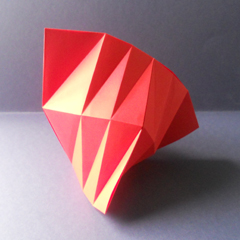 |
|
Cushions Cushions are two
part modular sculptures where each of the two
modules is created by dividing a rectangle into a
grid of smaller rectangles using creases made in
one direction and then dividing each of these
smaller rectangles in half by a diagonal crease
made in the other. They are easy to make and come
in many beautiful forms.
More
information about Cushions and a link to online
diagrams can be found here.
|
|
| |
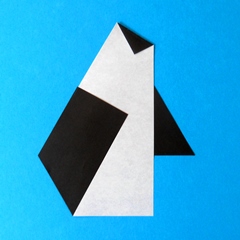 |
|
Minimalist
and Drawing with Paper Designs Minimalist origami
is the art of folding recognisable designs using
the absolute minimum number of folds. Drawing
with Paper designs use the contrast between the
two surfaces of irogami paper to create simple
pictorial designs. Some designs, like the Penguin
shown here, can be both.
You can
find details of many of my own designs of this
type (and in many cases links to diagrams) on the
Designs Index page here.
Or try my
general page about Minimalist
Representational Origami
|
|
| |
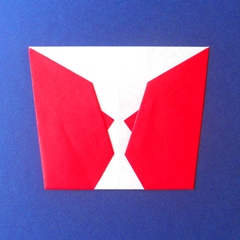 |
|
Transformable,
Action, Double Image Designs and Visual Illusions I have always been
excited by origami designs that do things, or
that seem to be several different things at one
and the same time.
You can
find details of many of my own designs of this
type (and in many cases links to diagrams) on the
Designs Index page here.
|
|
| |
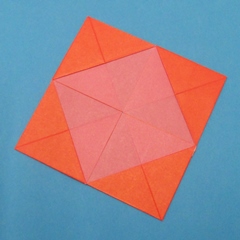 |
|
Paperfolding
Puzzles There is a whole section of this
site devoted to puzzles that can be solved by
folding paper and many sets of diagrams
explaining how to construct and solve them.
There is a
good introduction to the subject in my page About Paperfolding
Puzzles.
If you want
to dive right in you could try solving my Octagramian, which only
requires a single square of paper, or Robert E
Neale's classic Sheep and Goats, which is a
treatment of the simplest silverflexagon.
|
|
| |
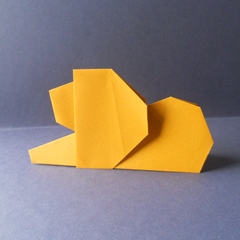 |
|
Naive
Origami and other Multiple Sheet Designs Naive origami is a
multiple sheet design style of my own invention
in which the fundamental proportions and look of
the designs are largely determined by working
within a set of simple rules, with the intention
that this leaves the designer less in control of
the creative process, in much the same way that a
writer is less in control of the language used
when creating a short structured poem like a
haiku rather than prose.
A fuller
explanation and examples of this style can be
found here.
There are
diagrams for some of my other multiple sheet
designs here.
|
|
| |
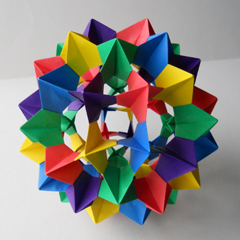 |
|
Modular
Sculpture Modular sculpture is the term I use
to describe any abstract geometric modular design
that is neither a straightforward model of a
polyhedron nor a kusudama. Modular sculptures
can be simple designs made from just two modules
or quite complex designs made from sixty modules
or more.
The picture
to the left shows my Electra 60 sculpture. You
can find diagrams here.
More
designs of this type can be viewed in the Gallery of Modular
Sculpture and in my main Modular Sculptures page, which also
provides links to diagrams.
|
|
| |
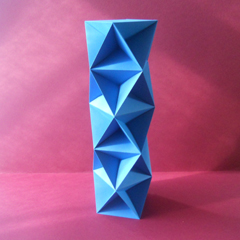 |
|
Macromodular
Sculpture Macromodular sculptures are second
generation modular designs built by combining
complete first generation modular assemblies into
larger structures either with, or without, the
use of joining or separating pieces.
The picture
to the left shows my Helterskelter sculpture.
Diagrams can be found in my book Building with
Butterflies.
More
designs of this time can be viewed in the Gallery of
Macromodular Sculpture and in my main Macromodular
Sculptures page, which also provides links to
diagrams.
|
|
| |
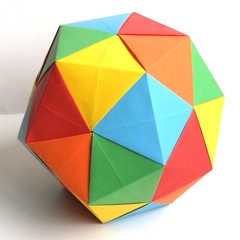 |
|
Modular
Polyhedra Modular origami provides a versatile
and rewarding way to make robust polyhedra
suitable for classroom use that has many
advantages over the traditional method of making
them from nets.
A large
selection of the best of these designsn can be
found in the second edition of my book Mathematical Origami, published by
Tarquin publicationsin 2020.
Diagrams
for a few other excellent designs, which were
outside the scope of the book, can be found on my
Education page.
|
|
| |
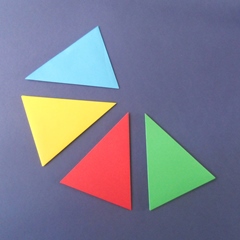 |
|
Origami
Tiles and Tiling Patterns Origami tiles are
simple flat shapes that can be folded from
ordinary photocopy paper and then laid together
to create colourful tiling patterns. They are
ideal for use in the mathematics classroom or at
mathematics clubs.
More
information can be found in my page About Origami Tiles
and Tiling Patterns which provides
links to many sets of diagrams explaining how to
fold origami tiles and showing some of the
patterns they will make.
If you want
a quick taster have a look at the diagrams for my
Cairo Tiles
|
|
| |
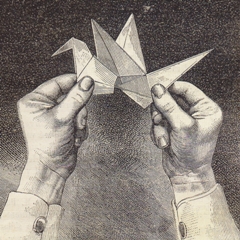 |
|
The Public Paperfolding
History Project This project aims to collect information from
verifiable historical sources from which a more
reliable narrative of the development of
paperfolding can be shaped, and to make this
information publicly available for everyone to
study and enjoy.
If you want
to get a quick flavour of this project take a
look at my Blog - Life, Death
and Paperfolding
|
|
| |
| |